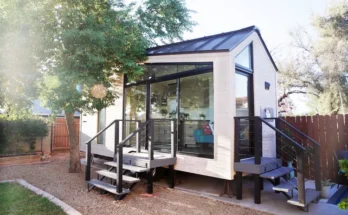The Airbus A350 and Boeing 787 Dreamliner are two of the most advanced and efficient widebody aircraft in the world. Both are designed with long-haul performance, fuel efficiency, and passenger comfort in mind. As the flagships of their respective manufacturers, they are frequently compared across a variety of metrics. One of the most common and complex questions among aviation professionals and enthusiasts alike is: which of the two aircraft costs more?
At first glance, this might seem like a simple matter of checking a price tag. However, in the world of commercial aviation, the real cost of an aircraft goes far beyond any sticker price. Between multiple variants, fluctuating market conditions, airline-specific deals, and geopolitical factors, determining which aircraft costs more is a nuanced endeavor.
Understanding the Lineup
To start, it’s important to recognize that both aircraft families come in different versions, each with varying capacities and capabilities. The Boeing 787 Dreamliner comes in three main variants:
-
787-8: The smallest version, typically seating 242 passengers with a range of about 7,305 nautical miles.
-
787-9: A mid-sized variant that can carry 296 passengers and fly 7,565 nautical miles.
-
787-10: The largest model, seating up to 318 passengers, but with a slightly reduced range of 6,330 nautical miles.
Meanwhile, the Airbus A350 also has two key models:
-
A350-900: Carries approximately 300 passengers over 8,100 nautical miles.
-
A350-1000: A stretched version seating up to 350 passengers with a range of 8,700 nautical miles.
These differences mean that comparing one aircraft to another directly depends on which variant is being examined.
Pricing Complexity
Traditionally, Airbus and Boeing released list prices for their aircraft, which offered a general sense of cost but rarely reflected what airlines actually paid. These list prices were often significantly higher than the real prices due to heavy negotiations, discounts, and package deals.
As of recent years, both manufacturers have stopped publishing list prices altogether. The reason? The actual price of an aircraft depends on a myriad of factors, including the size of the order, the relationship between the airline and the manufacturer, custom specifications, and even geopolitical considerations.
Based on industry estimates and data from sources like ch-aviation and Cirium, here’s a general breakdown of current market values:
-
Boeing 787-8: ~$125–135 million
-
Boeing 787-9: ~$150–170 million
-
Boeing 787-10: ~$170–190 million
-
Airbus A350-900: ~$155–175 million
-
Airbus A350-1000: ~$180–200 million
These numbers offer only a rough snapshot and are subject to change due to global economic shifts and supply chain disruptions.
External Factors Driving Costs
Beyond the aircraft specs and direct negotiations, broader economic factors are increasingly impacting aircraft pricing. One of the biggest issues in recent years has been the impact of global trade tensions and tariffs. For example, during the U.S.–EU trade disputes, tariffs on large civil aircraft and aerospace components created uncertainty around pricing and competitiveness.
Analysts have warned that trade barriers and increased production costs—partly due to raw material prices and labor shortages—could drive up the cost of the Boeing 787 by as much as $40 million. This would not only make the aircraft more expensive but could also hurt Boeing’s ability to compete globally, especially in regions where Airbus already has a strong presence.
Additionally, fluctuating exchange rates and inflation pressures can also skew the financial landscape. Aircraft deals are typically denominated in U.S. dollars, but global airlines must hedge against currency risk, adding another layer of financial complexity.
Operating Costs and Efficiency
It’s also worth noting that the “cost” of an aircraft is not just what you pay upfront—it’s about what you spend over time. Both the A350 and 787 are designed to be significantly more fuel-efficient than older models like the 747 or A340. However, the A350 is generally regarded as slightly more efficient in terms of fuel burn per seat, particularly on ultra-long-haul routes. The Dreamliner, meanwhile, is praised for its advanced materials and lower maintenance needs.
Ultimately, these operational considerations factor heavily into an airline’s decision-making process and influence long-term cost-effectiveness.
Conclusion
So, which aircraft costs more? On a variant-to-variant basis, the Airbus A350—especially the A350-1000—is often slightly more expensive than its Boeing counterpart. However, the final cost depends on numerous factors including the deal structure, customization, economic conditions, and long-term operational expenses.
In the ever-evolving landscape of commercial aviation, there is no definitive winner in terms of cost. Airlines must evaluate aircraft not just on purchase price, but on total lifetime value, and in that regard, both the A350 and the 787 hold strong positions for different types of missions and strategies.



